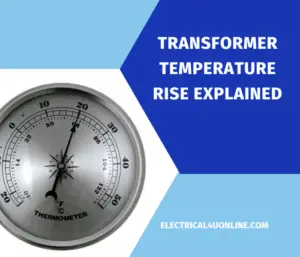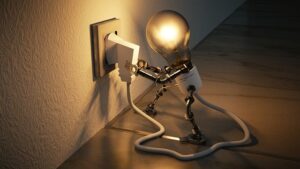Table of Contents
What Does Electrical Inspection Mean?
An electrical inspection is a process where a qualified professional examines an electrical system to ensure it complies with safety standards and operates correctly.
It involves assessing various components of the system, such as wiring, circuit breakers, outlets, switches, and appliances, to identify potential hazards or issues.
Why is it Important?
Regular electrical inspections help:
- Prevent Accidents: Reduce the risk of fire, electrocution, and equipment damage.
- Save Money: Detect and fix small issues before they escalate into costly repairs.
- Maintain Compliance: Avoid legal issues and penalties for non-compliance.
- Increase Property Value: A properly inspected and maintained system is more attractive to buyers or tenants.
Purpose of Electrical Inspection
The main goals of an electrical inspection are to:
- Ensure Safety: Identify and mitigate risks of electrical fires, shocks, or other accidents.
- Check Compliance: Verify that the system meets local electrical codes and regulations.
- Assess Functionality: Ensure the system is working efficiently and reliably.
- Support Property Transactions: Electrical inspections are often required when selling or buying a property.
Here are some key objectives of electrical inspections:
-
Safety: Ensure that electrical systems and installations are safe for occupants, users, and property. This includes identifying and rectifying potential fire hazards, electrical shocks, and other safety risks.
-
Compliance: Verify that electrical installations adhere to local, national, and international electrical codes and regulations, such as the National Electrical Code (NEC) in the United States.
-
Prevention: Identify and address issues that could lead to electrical failures, outages, or breakdowns, thereby preventing costly downtime and repairs.
-
Efficiency: Evaluate the efficiency of electrical systems to reduce energy consumption and operational costs, especially in commercial and industrial settings.
-
Documentation: Maintain records of inspections, repairs, and maintenance activities to demonstrate compliance with legal requirements and facilitate troubleshooting in the future.
-
Risk Reduction: Minimize the risk of electrical accidents, such as electrical fires, by identifying and addressing potential hazards.
Types of electrical inspections
Electrical inspections are crucial to ensure the safety and compliance of electrical systems in various settings.
There are several types of electrical inspections, each serving a specific purpose. Here are some common types of electrical inspections:
-
Residential Electrical Inspection: This type of inspection is conducted in homes to ensure that the electrical wiring, outlets, switches, and other components meet local building codes and safety standards. It includes checking for proper grounding, circuit protection, and the absence of hazardous conditions.
-
Commercial Electrical Inspection: Commercial electrical inspections are similar to residential inspections but are conducted in commercial and industrial buildings. These inspections ensure that the electrical systems meet the specific requirements for the type of building and its intended use.
-
Electrical Panel Inspection: The electrical panel, also known as a breaker box or distribution board, is a critical component of any electrical system. This inspection involves checking the panel for proper labeling, circuit breaker functionality, and compliance with safety standards.
-
Electrical Wiring Inspection: This inspection focuses on the wiring throughout a building, including its condition, size, type, and routing. It ensures that the wiring is properly installed and adequately sized for the connected loads.
-
Electrical Equipment Inspection: Certain electrical equipment, such as generators, transformers, and motor control centers, require periodic inspections to verify their condition, operation, and safety. This helps prevent equipment failures and accidents.
-
Electrical Code Compliance Inspection: These inspections assess whether an electrical installation complies with the relevant electrical codes and standards, such as the National Electrical Code (NEC) in the United States or local electrical codes in other regions.
-
Safety Inspection: Safety inspections focus on identifying potential electrical hazards, such as exposed wiring, damaged equipment, or improper grounding. Corrective actions are recommended to mitigate these hazards and enhance safety.
-
Energy Efficiency Inspection: These inspections aim to identify opportunities for energy savings within an electrical system. They may involve evaluating lighting, HVAC systems, and other electrical components to recommend energy-efficient upgrades.
-
Emergency and Exit Lighting Inspection: In commercial and public buildings, emergency and exit lighting systems are inspected to ensure they function correctly during power outages or emergencies, providing safe exit routes.
-
Renovation or Addition Inspection: When modifications or additions are made to an existing electrical system, inspections are needed to verify that the changes meet code requirements and integrate safely with the existing system.
-
Maintenance Inspection: Regular maintenance inspections are essential for identifying wear and tear on electrical components, ensuring they remain in good working condition. These inspections help prevent unexpected failures.
-
Specialty Inspections: Certain facilities, such as healthcare facilities, data centers, and hazardous environments, may require specialized electrical inspections to address specific safety and operational concerns unique to those environments.
electrical machines inspection
Performing checks and inspections on electrical machines is essential to ensure their safe and efficient operation.
Regular maintenance and inspections can help identify potential issues, prevent breakdowns, and extend the lifespan of the machines. Here is a checklist of common checks and inspections to be done on electrical machines:
-
Visual Inspection:
- Check for signs of physical damage, such as cracks, dents, or corrosion on the machine’s enclosure and components.
- Look for loose or damaged wiring, connections, or terminals.
- Inspect for any signs of overheating, including discoloration or melting of insulation or components.
- Ensure that ventilation openings are clear and unobstructed.
-
Electrical Connections:
- Tighten and secure all electrical connections, including terminals, busbars, and cable connections.
- Verify that wire sizes and types are appropriate for the machine’s rated current and voltage.
-
Insulation Resistance Testing:
- Conduct insulation resistance tests using a megohmmeter (megger) to check for insulation breakdown or degradation.
- Compare the measured resistance values to the manufacturer’s specifications.
-
Grounding and Bonding:
- Ensure that the machine is properly grounded and bonded according to electrical codes and safety standards.
- Check ground connections for corrosion and proper tightness.
-
Bearings and Lubrication:
- Inspect bearings for wear, noise, or signs of overheating.
- Lubricate bearings and other moving parts as per the manufacturer’s recommendations.
-
Cooling System:
- Check the cooling system, such as fans or cooling fins, for cleanliness and proper operation.
- Ensure that cooling vents are not blocked.
-
Alignment and Balance:
- Verify that shafts, belts, and couplings are properly aligned and balanced to prevent vibration and undue stress on the machine.
-
Electrical Tests:
- Perform electrical tests, including voltage, current, and frequency measurements, to ensure the machine operates within its specified parameters.
- Check for abnormal voltage fluctuations or spikes.
-
Safety Features and Controls:
- Test safety features and controls, such as emergency stop buttons and interlocks, to ensure they function correctly.
-
Protection Devices:
- Verify the operation of overload relays, thermal protection devices, and circuit breakers.
- Ensure that protection settings are within the specified limits.
-
Noise and Vibration:
- Listen for unusual noises or excessive vibrations during operation, which may indicate mechanical issues.
-
Cleaning and Dust Removal:
- Clean the machine and remove dust and debris, which can lead to overheating and reduced efficiency.
-
Documentation and Records:
- Maintain a record of inspections, repairs, and maintenance activities for future reference and compliance with regulatory requirements.
-
Periodic Testing:
- Schedule periodic comprehensive testing and inspection by a qualified technician or engineer to assess the machine’s overall health and performance.
-
Manufacturer’s Guidelines:
- Follow the manufacturer’s recommendations for maintenance schedules and procedures specific to the machine type and model.
Don’t Leave Empty-Handed!
Install my Free Android App on Google Play:
Electrical Cables Most Common Tables “Cables Tables”
And, my Electrical Calculations App “Fast Electrical Calculator”
Discover more great content by subscribing to My channel
Looking to stay ahead of the game in the world of electrical engineering? Subscribe to my YouTube channel and gain access to exclusive content you won’t find anywhere else!
The staff I recommend
(Amazon Affiliate Links to products I believe are high quality):
- Economy 120 Volt/60Hz AC Power Source – Step-Down Voltage & Frequency Converters 1800W
- UNI-T Digital Multimeter Tester UT139C
- 50-Amp Extension Cord for RV “100ft”
- Voltage Stabilizer 110/220v
- Hair Dryer “best selling“
- TOSHIBA EM131A5C-BS Countertop Microwave Ovens
Disclaimer: This contains affiliate links to Amazon products. I may earn a commission for purchases made through these links.


